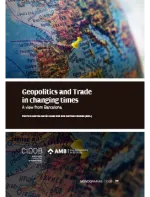Can the transatlantic relationship be redirected?

The architecture of today’s transatlantic relationship emerged at the end of the Second World War. Building on the collaboration between European countries and the United States (US), a liberal international order was created. Defending and maintaining that order has given rise to a close alliance at the political, economic, military and strategic levels. At governmental level, this alliance has been embodied in cooperation and agreements; at business level, in investment and the acquisition of companies; and, at the social level, in the values and interests shared between the two sides of the Atlantic.
Politically, the relationship has not been without cyclical crises. As well as the Iraq war, many examples of varying nature have arisen over the past 70 years, with disagreements traditionally limited to economic rivalry and particular issues. The relationship has also been based on mutual respect for differences. However, the current transatlantic crisis raises doubts about the foundations of the relationship, as President Trump replaces respect with coercion and imposition. This chapter argues that while the Biden Presidency will seek to improve the forms of the relationship, the underlying problems will persist and China will continue to be the priority for the US.